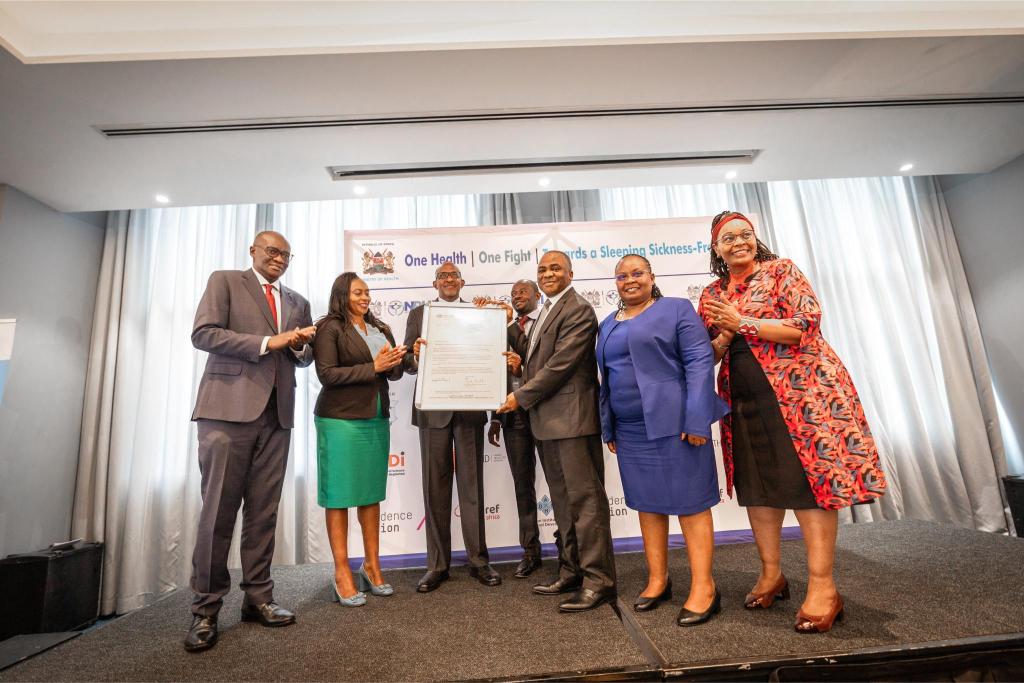Kenya has reached a major health milestone after the World Health Organization officially declared that the country has eliminated human African trypanosomiasis, commonly known as sleeping sickness, as a public health problem. \
This success marks an important victory in Kenya’s long struggle against a disease that once severely affected rural communities living near wildlife and livestock.
Sleeping sickness, often called the “silent killer” in rural areas, starts with symptoms such as fever and headaches, but later causes confusion and severe brain damage.
Without treatment, the disease leads to a deep and irreversible coma, which many victims do not survive.
The announcement that Kenya has overcome this threat offers relief to many who lived under the shadow of this deadly illness for decades.
WHO Director-General Tedros Adhanom Ghebreyesus praised Kenya’s achievement, saying, “I congratulate the government and people of Kenya on this landmark achievement.
Kenya joins the growing ranks of countries freeing their populations of human African trypanosomiasis. This is another step towards making Africa free of neglected tropical diseases.”
While elimination as a public health problem does not mean the disease is completely gone, it shows that cases are now very rare, carefully tracked, and treated quickly to stop spread
. Sleeping sickness is caused by a parasite transmitted by bites from infected tsetse flies. The disease mainly affects people living in rural areas involved in farming, raising animals, hunting, or fishing.
Kenya’s fight against sleeping sickness began in the early 1900s when the first cases were recorded. The disease caused many deaths, especially in places like the Maasai Mara, a known hotspot. The last local case was in 2009, and the last two cases, linked to Maasai Mara, were imported in 2012.
The type of sleeping sickness in Kenya, called rhodesiense, progresses rapidly and can be deadly within weeks if untreated.
It attacks many organs and eventually reaches the brain, causing serious problems like personality changes, loss of coordination, and sleep disturbances before coma occurs.
Since there is no vaccine, Kenya’s strategy has focused on early diagnosis and treatment, controlling the tsetse fly population, and ongoing surveillance.
Efforts were strengthened by improving testing services at 12 health centers in six counties where the disease was common. Health workers were trained to use sensitive tests for quick detection.
Vector control and monitoring were led by the Kenya Tsetse and Trypanosomiasis Eradication Council, while veterinary authorities watched for cases in animals, as the disease also affects livestock and wildlife.
Health Cabinet Secretary Aden Duale hailed the announcement, saying, “This validation marks a major public health milestone for Kenya, as we celebrate the elimination of a deadly disease in our country. The achievement will not only protect our people but also pave the way for renewed economic growth and prosperity. This follows many years of dedication, hard work and collaboration.”
Director General for Health, Dr Patrick Amoth, emphasized the teamwork involved: “This key milestone reflects Kenya’s efforts and commitment over many years, as a collaboration between national and county governments, national research institutions, development partners and affected communities. The country remains fully committed to sustain the quality of care and surveillance in line with WHO’s recommendations.”
Kenya is now the tenth country globally to be certified by WHO for eliminating sleeping sickness as a public health concern. Others on this list include Benin, Chad, Côte d’Ivoire, Equatorial Guinea, Ghana, Guinea, Rwanda, Togo, and Uganda.
This is Kenya’s second success against neglected tropical diseases after being certified free of Guinea worm disease in 2018.
Worldwide, 57 countries have eliminated at least one neglected tropical disease, moving closer to WHO’s 2030 goal to eradicate multiple such diseases.
WHO Representative to Kenya, Dr Abdourahmane Diallo, recognized the teamwork behind this win: “This success was made possible by the Ministry of Health’s leadership, the dedication of health workers in areas at risk and the support from key partners. WHO is proud to have contributed to this achievement and encourages all stakeholders to remain involved in post-validation monitoring.”
Kenya will now focus on staying alert with a surveillance plan to catch any new cases early. Special attention will be on places like Maasai Mara, where the tsetse fly and wildlife could reintroduce the disease.
WHO has promised ongoing support during this phase and will keep a stock of medicines ready for a quick response if new outbreaks happen.
